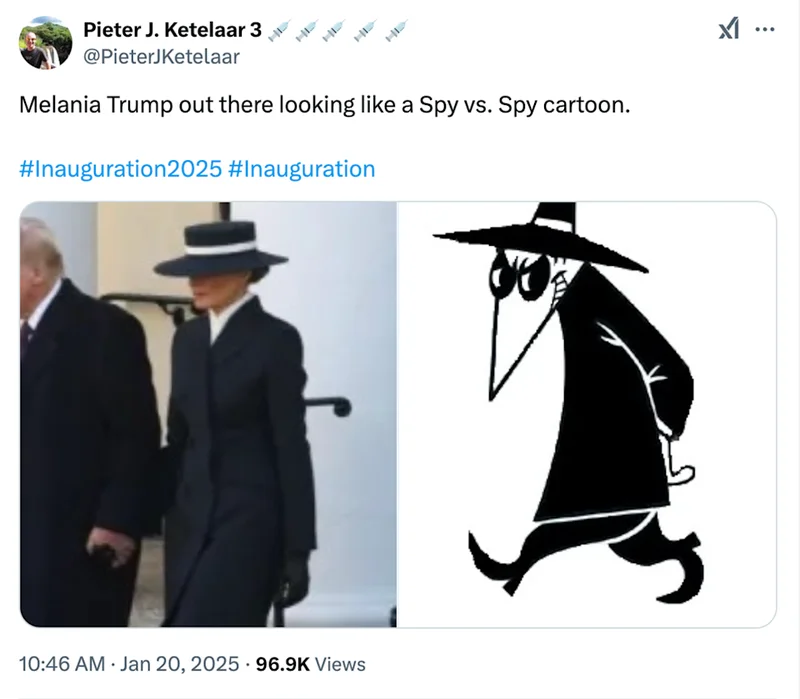Behind the $MELANIA Coin Collapse: A Clinical Look at 'Weaponized Fame'
There’s a certain brutal elegance to the numbers behind the $MELANIA meme coin. On January 19th, the token launched for pennies. Within hours, it hit a peak price of $13.73, creating a theoretical market capitalization of over $1.6 billion. Today, it trades for about 10 cents. For anyone who bought at the peak, that represents a capital destruction of over 99%. To be more exact, based on the peak price and its current value, the loss is approximately 99.27%.
A drop of that magnitude is rarely an accident. It’s a financial crater. While retail euphoria and subsequent panic can explain many market bubbles, a new class-action lawsuit alleges something far more deliberate was at play here, with Melania Trump’s meme coin architects accused of pump-and-dump fraud in lawsuit. The filing doesn’t target the former first lady—the plaintiffs state they don’t believe she was “culpable”—but rather the architects behind the coin, executives from the Meteora exchange and Kelsier Labs. The core allegation is that this wasn’t a speculative asset that failed; it was a “pre-engineered pump-and-dump operation” from the very beginning.
According to the court filings, the mechanics were classic. Insiders allegedly purchased vast quantities of the coin at launch, used a high-profile endorsement to generate a massive influx of public interest and capital, and then systematically sold their holdings into that manufactured demand. The resulting liquidity cascade crushed the price, leaving retail investors holding functionally worthless tokens. As one report on the lawsuit puts it, the Melania Trump memecoin team ‘weaponized fame to disarm diligence,’ alleges court filing.
This is the part of the analysis that I find genuinely puzzling, not because the tactic is new, but because of its sheer, unadulterated efficiency in the crypto space. In traditional equity markets, layers of regulation, disclosure requirements, and circuit breakers exist (in theory, at least) to slow this kind of value extraction. Here, a single tweet from Melania Trump—“The Official Melania Meme is live!”—was allegedly all it took to ignite the fuse. There was no prospectus, no earnings report, no underlying asset. The product was the hype.

The Attention Economy as an Asset Class
The lawsuit against the creators of $MELANIA forces a critical, almost methodological, question: how do you even conduct diligence on an asset whose only value is attention? Meme coins have no utility. They don't facilitate transactions in a novel way or represent a stake in a revenue-generating enterprise. Their valuation is a pure, unanchored reflection of social media sentiment and momentum. The plaintiffs are essentially arguing that the defendants didn't just promote a worthless asset; they manufactured the very attention that gave it a temporary, and fictitious, value.
This is where the operation becomes more intricate than a simple market mania. The filing points to a pattern, suggesting the $MELANIA coin was just one of at least 15 similar schemes. Look at the data points. Days before his inauguration, Donald Trump launched his own $TRUMP coin, which peaked at $45.47 and now trades around $5.79—a steep 87% decline, but not the near-total wipeout of its counterpart. In February, Argentine president Javier Milei promoted his own $LIBRA coin, which also saw its value plummet shortly after launch, triggering a fraud investigation in his home country.
The pattern isn't just about using celebrity; it's about using a specific type of celebrity: polarizing political figures who command intense, tribal loyalty. This kind of fame is particularly effective at disarming diligence. An endorsement isn't perceived as financial advice but as a signal of in-group affiliation. The decision to buy isn't based on a discounted cash flow analysis; it's an act of identity expression. The lawsuit, supported by an anonymous whistleblower and text messages, alleges the creators understood this behavioral dynamic perfectly and exploited it systematically.
The core of the legal argument will likely rest on proving intent and coordination (the filings accuse co-founder Benjamin Chow of being associated with deceptive practices since 2021). For investors left with the fallout, however, the lesson is a stark reminder that when an asset’s only feature is its own popularity, the people who control the narrative control the entire market. In this case, the narrative was allegedly designed with a definitive, and profitable, ending for its authors.
The Math of Manufactured Hype
Ultimately, the celebrity names are a distraction. The real story here is the cold, repeatable calculus of the scheme itself. This wasn't an investment that went sour; it was an arbitrage play on human attention. The creators allegedly identified a massive inefficiency in the market: the lag between a high-profile endorsement and the moment the public realizes there is no underlying value. They weaponized fame not just to attract buyers, but to create the very liquidity they needed to exit their own positions. It's a brutally efficient model, and the lawsuit is simply an attempt to attach legal consequences to a process that, in the unregulated corners of crypto, has become a feature, not a bug.









